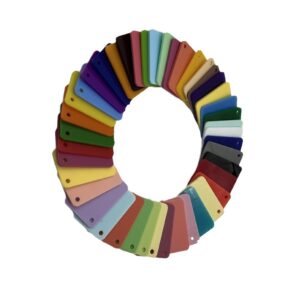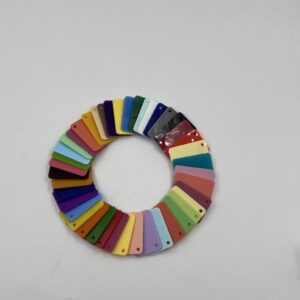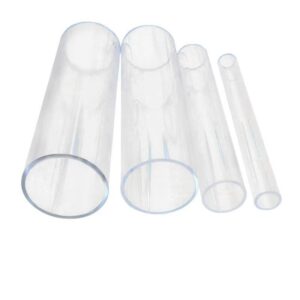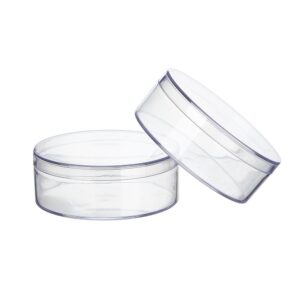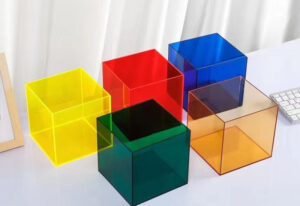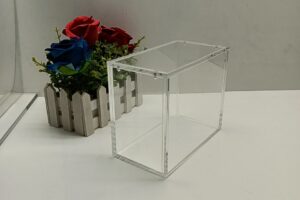Summary
Recycled acrylic sheets are increasingly recognized for their role in promoting sustainability across various industries, leveraging the inherent properties of acrylic—such as clarity, durability, and impact resistance—while significantly reducing environmental impact. Acrylic sheets are widely used in applications ranging from construction and signage to consumer goods and electronics, with the building sector representing the largest share of their usage. As global awareness of environmental issues grows, the shift toward using recycled acrylic has emerged as a crucial strategy for manufacturers and consumers seeking to minimize waste and carbon footprints associated with traditional acrylic production.
Table of Contents
The environmental advantages of recycled acrylic sheets are notable, as their production requires less energy and generates fewer greenhouse gas emissions compared to virgin acrylic manufacturing. By integrating recycled content into products, businesses can conserve natural resources and help reduce the accumulation of plastic waste in landfills.
Furthermore, recycled acrylic sheets retain the desirable qualities of their virgin counterparts, making them a versatile choice for various applications, from architectural elements to safety barriers in industrial settings. The growing emphasis on sustainability within the construction and manufacturing sectors is driving demand for recycled acrylic sheets. Companies are increasingly recognizing the importance of adopting eco-friendly alternatives, not only to meet consumer preferences but also to comply with stricter environmental regulations. Innovations in recycling technology, such as advanced processing methods, are enhancing the quality and performance of recycled acrylic, making it a competitive option in the market.
Despite the many benefits, the recycled acrylic sheet industry faces challenges, including high production costs and regulatory hurdles that can complicate standardization and compliance efforts. Nonetheless, the ongoing advancements in recycling technology and the rising consumer demand for sustainable products suggest a promising future for recycled acrylic sheets, positioning them as essential components in the transition toward a circular economy.

Background
Acrylic sheets, known for their transparency, lightweight nature, and impact resistance, have become a prevalent alternative to glass across various applications, including signage, displays, and architectural elements. The building and construction sector holds the largest share of acrylic sheet usage, accounting for 41% of the market, as these materials are extensively utilized to protect architectural features like windows and doors. In addition to construction, acrylic sheets find significant application in consumer electronics and industrial equipment, where their ability to guard against abrasion and dust is critical, contributing to 35% of the total applications. Recent advancements in acrylic production have led to the development of specialized sheets that cater to specific needs, such as anti-reflective and UV-protective variants, which are particularly important for outdoor signage and eyewear.
Furthermore, acrylic’s versatility allows it to be easily cut, molded, and colored, making it suitable for a broad range of uses. This adaptability, combined with its aesthetic qualities—such as high-gloss finishes and textural options—enables designers to create engaging environments that interact dynamically with light and space. The increasing demand for sustainable materials has prompted a shift within the acrylic industry. Although the production of acrylic sheets is carbon-intensive, there is a growing emphasis on recycling and eco-friendly manufacturing processes. Many manufacturers are now incorporating recycled content into their production and exploring innovative ways to minimize the environmental footprint associated with acrylic. This shift aligns with broader trends toward sustainability, making recycled acrylic sheets a crucial component in promoting environmental responsibility in construction and design.

Benefits of Recycled Acrylic Sheets
Recycled acrylic sheets offer numerous environmental and practical advantages, aligning with the increasing global focus on sustainability.
Environmental Impact
One of the most significant benefits of recycled acrylic sheets is their reduced environmental footprint. The production of these sheets consumes less energy and generates fewer greenhouse gas emissions compared to virgin acrylic production. By choosing recycled acrylic, manufacturers and consumers can help minimize waste in landfills, as recycling these materials conserves valuable resources and decreases the amount of plastic waste. Moreover, the use of recycled materials lowers the demand for new raw materials, further contributing to the conservation of natural resources and reduction in carbon emissions.
Properties and Versatility
Recycled acrylic sheets maintain many of the advantageous properties of their virgin counterparts, including clarity, durability, and ease of fabrication. They are particularly noted for their excellent weather resistance and impact resistance, making them suitable for a variety of applications, including residential and commercial construction projects such as windows and skylights. Additionally, their lightweight nature and non-toxic characteristics make them a safe choice for diverse applications, including medical devices and consumer goods.
Support for Sustainable Practices
The growing demand for recycled acrylic sheets reflects a broader trend in the construction and manufacturing industries towards sustainable practices. Construction firms, in particular, are increasingly seeking sustainable alternatives to traditional materials, recognizing the importance of energy-efficient and environmentally friendly options in modern building designs. Furthermore, the continuous innovation in production techniques has made recycled acrylic sheets more competitive, fostering an industry shift toward the adoption of sustainable materials.
Health and Safety Considerations
Recycled acrylic sheets are non-toxic and safe for various applications, including food contact, which adds to their appeal as a sustainable choice. The production processes for recycled acrylic do not emit harmful chemicals, ensuring a safer option for both the environment and public health. This aspect is particularly important as industries strive to meet stricter environmental regulations and consumer demand for safer products.
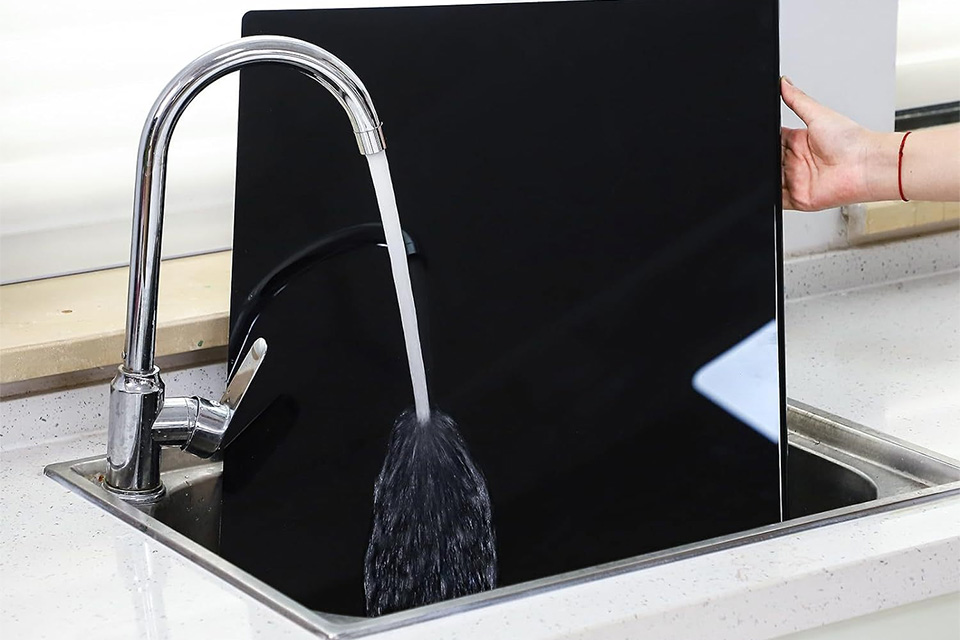
Manufacturing Process
The manufacturing process of recycled acrylic sheets emphasizes sustainability through several crucial steps, starting with the collection of acrylic scrap from various sources, including manufacturing leftovers and post-consumer waste. This collected acrylic undergoes a thorough cleaning and sorting process to remove impurities, ensuring high-quality recycled material ready for reuse.
Once cleaned, the acrylic is processed using advanced recycling technologies, which allow it to be transformed into recycled acrylic sheets that maintain the same durability and clarity as standard acrylic. This process not only reduces waste but also conserves energy and resources, making recycled acrylic sheets a responsible choice for environmentally- conscious businesses.
Recycled acrylic sheets can be made from both production scrap and used acrylic items at the end of their useful life, creating a closed-loop lifecycle. Unlike many other plastics that degrade after multiple recycling cycles, recycled acrylic can be recycled indefinitely. The transformation process typically involves shredding the acrylic, melting it, and reforming it into pellets or new sheets, allowing it to be reintegrated into the manufacturing process.
Moreover, companies like Acrylic Design have implemented systems for collecting and recycling used acrylic, demonstrating a commitment to sustainability and reducing landfill waste. In 2021, a study revealed that a significant portion of respondents were interested in options to collect and recycle their used acrylic, underscoring the demand for sustainable practices in the industry.
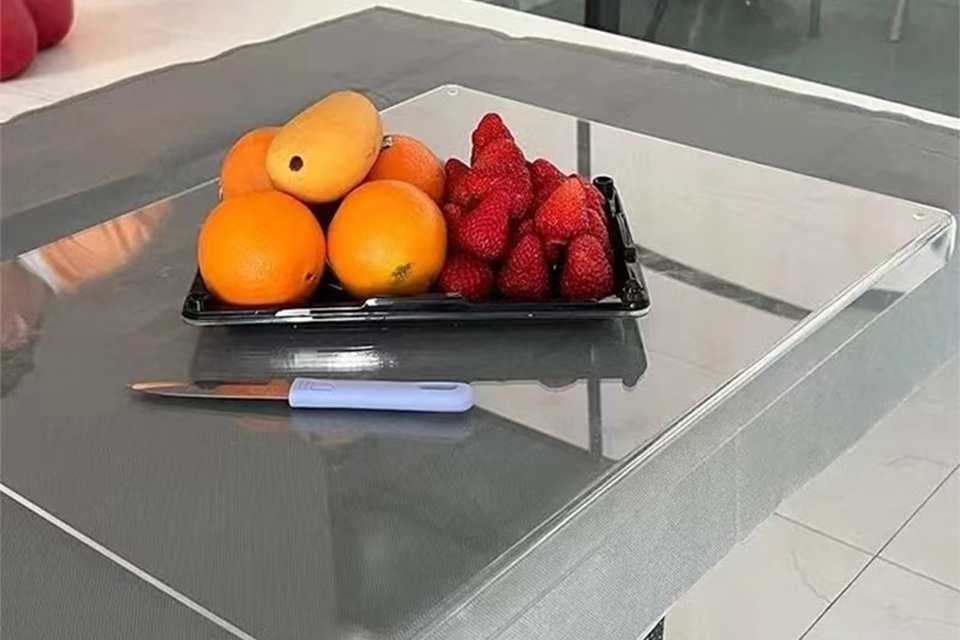
Applications of Recycled Acrylic Sheets
Recycled acrylic sheets are increasingly finding applications across various industries due to their favorable properties and the growing emphasis on sustainability.
Signage and Displays
The vibrant advertising and retail landscape has significantly driven the demand for recycled acrylic sheets in signage and display applications. The material’s versatility and visual appeal make it perfect for creating impactful signage, including backlit signs and point-of-sale displays. Its superior light diffusion properties enhance visibility and creativity in retail settings, while its durability ensures longevity in both indoor and outdoor environments. Furthermore, the ability to print directly on recycled acrylic allows for high-quality, vibrant graphics, making it an ideal choice for promotional materials.
Industrial Applications
Recycled acrylic sheets are also extensively used in various industrial applications. Industries leverage these sheets for manufacturing machinery guards, safety barriers, and industrial signage due to their impact resistance and durability. As organizations prioritize workplace safety and the adoption of sustainable practices, the demand for recycled acrylic sheets in industrial settings is on the rise. The material’s robustness allows it to withstand harsh environments while promoting a safer workplace.
Construction Industry
In the construction sector, recycled acrylic sheets are utilized for both residential and commercial projects. Their weather resistance, transparency, and ease of installation make them ideal for windows, skylights, and other architectural elements. The shift towards sustainable building materials has led construction firms to adopt recycled acrylic sheets, which provide an aesthetic and durable alternative to traditional materials. Additionally, the flexibility of acrylic allows architects to design innovative and energy-efficient buildings while maintaining aesthetic appeal.
Consumer Goods and Electronics
Beyond construction and industrial uses, recycled acrylic sheets are increasingly integrated into consumer goods and electronics. Their clarity, durability, and ease of fabrication make them suitable for a wide range of products, from household items to medical devices. As sustainability becomes a key focus across various industries, the growing availability of recycled acrylic sheets supports the development of innovative products that align with environmental standards.
Architectural Innovations
Recycled acrylic is being embraced in architectural glazing, where custom-shaped panels can create stunning visual effects in building facades and interior partitions. This application not only enhances the aesthetics of a structure but also contributes to its energy efficiency by improving natural lighting. The continuous exploration of new and innovative uses for recycled acrylic sheets is expected to drive market growth further, allowing architects and designers to experiment with creative solutions that meet modern sustainability demands.
Market Trends
The recycled acrylic sheet market is witnessing significant transformations driven by various factors, including sustainability, technological advancements, and evolving consumer preferences.
Sustainability Focus
A major trend influencing the market is the increasing emphasis on sustainability and eco-friendly materials. Companies are enhancing their eco-design efforts to incorporate higher percentages of recycled content in acrylic sheets without com- promising performance. The rising urbanization and industrial activity globally also contribute to the growing demand for sustainable construction materials, further boosting market interest in recycled acrylic sheets. Governments are actively supporting the use of recycled content and implementing regulations aimed at reducing single-use plastics, which is expected to drive investment in the sector.
Technological Advancements
Innovations in recycling technologies are significantly improving the efficiency and quality of recycled acrylic sheets. Advanced recycling methods, such as chemical recycling, are being adopted to produce high-quality materials that meet or exceed the specifications of virgin acrylic. Additionally, the integration of artificial intelligence and machine learning in recycling processes is optimizing waste sorting and improving material quality predictions, which reduces operational costs and waste generation. This technological evolution is making recycled acrylic products more appealing to manufacturers and consumers alike.
Market Dynamics
The North American market, in particular, is showing a strong trend towards customization and performance enhancement in acrylic sheets. Precision manufacturing techniques are enabling the production of customized sheets with specific thickness, color, and surface finish to cater to diverse applications. Furthermore, the inter- section of economic incentives and evolving consumer preferences for sustainable products creates a dynamic ecosystem that reinforces the market’s strategic relevance.
Competitive Landscape
The competitive landscape of the recycled acrylic sheet market is characterized by strategic partnerships, mergers, and acquisitions among leading players. Companies are continuously exploring new opportunities and expanding their product offerings to adapt to changing consumer demands. Notable market players are focusing on innovation, with a considerable portion of their investments directed toward research and development for high-performance coatings and eco-friendly product lines.
Challenges and Limitations
The recycled acrylic sheet market, while experiencing significant growth, faces several challenges and limitations that could impede its progress. One of the primary obstacles is the high cost associated with integrating advanced recycling technologies and upgrading existing infrastructure, which can be particularly burdensome for small and medium-sized enterprises (SMEs) . These financial constraints may deter potential market entrants and stifle innovation within the industry.
Regulatory compliance is another critical challenge, as strict regulations vary widely by region, complicating expansion and standardization efforts for manufacturers. Moreover, the limited availability of skilled professionals in the recycling sector exacerbates operational inefficiencies, ultimately hindering the potential for innovation and growth.
Supply chain disruptions, particularly in the sourcing of raw materials and logistics, have also posed significant challenges. Around 29% of manufacturers have reported inconsistencies in polymer supply, particularly from Asia-Pacific regions due to logistical constraints, while over 21% have faced production delays attributed to difficulties in procuring essential chemical additives. These disruptions can lead to bottlenecks in production and delivery, ultimately affecting the quality of recycled acrylic sheets.
Market saturation in certain regions is leading to pricing pressures, which can diminish profit margins for established players. As the competition intensifies, particularly from alternative materials like polycarbonate and glass that may offer more stable pricing, the acrylic sheet market must navigate a landscape of volatility in raw material costs and supply chain reliability .
Despite these challenges, advancements in recycling technologies have improved the consistency and performance of recycled materials, addressing common con- cerns about quality and reliability . However, the market must continue to adapt to shifting consumer preferences for sustainability and transparency, aligning product offerings with the increasing demand for eco-conscious solutions.
Future Outlook
The future of the recycled acrylic sheet market appears promising, bolstered by evolving market demands and ongoing technological advancements. Forecasts for the period from 2026 to 2033 suggest strong, sustained growth as various industries increasingly incorporate these sustainable solutions into their operational frameworks. Key developments, risks, and high-growth areas are anticipated through structured analysis, reflecting real-world changes that impact business opportunities.
Government regulations that promote recycled content usage and reduce reliance on single-use plastics are expected to further drive investment in the recycled acrylic sector. The North American market, in particular, is positioned as a crucial hub for processing and repurposing acrylic waste, benefiting from advanced recycling infrastructure and technological capabilities. As consumer preferences shift toward transparency and eco-conscious products, the demand for recycled materials is likely to rise, compelling manufacturers to innovate and explore recycled alternatives for greater cost stability and resource security.
In addition to mechanical recycling, advancements in chemical recycling technologies may offer solutions to improve the circularity of acrylic materials. While mechanical recycling has traditionally been the main method for processing acrylic waste, ongoing investments in chemical recycling are paving the way for scalable solutions that complement existing processes, allowing for a more robust recycling framework.
Moreover, the market is seeing the emergence of certified products, such as Recrylic, which ensures that used acrylic is effectively collected and recycled, contributing to a circular economy. With many benefits, including durability, safety, and environmental responsibility, recycled acrylic sheets are becoming a preferred choice across various applications, suggesting a bright future for this sustainable material. As these trends continue to unfold, the recycled acrylic sheet market is poised for substantial growth and innovation in the coming years.





